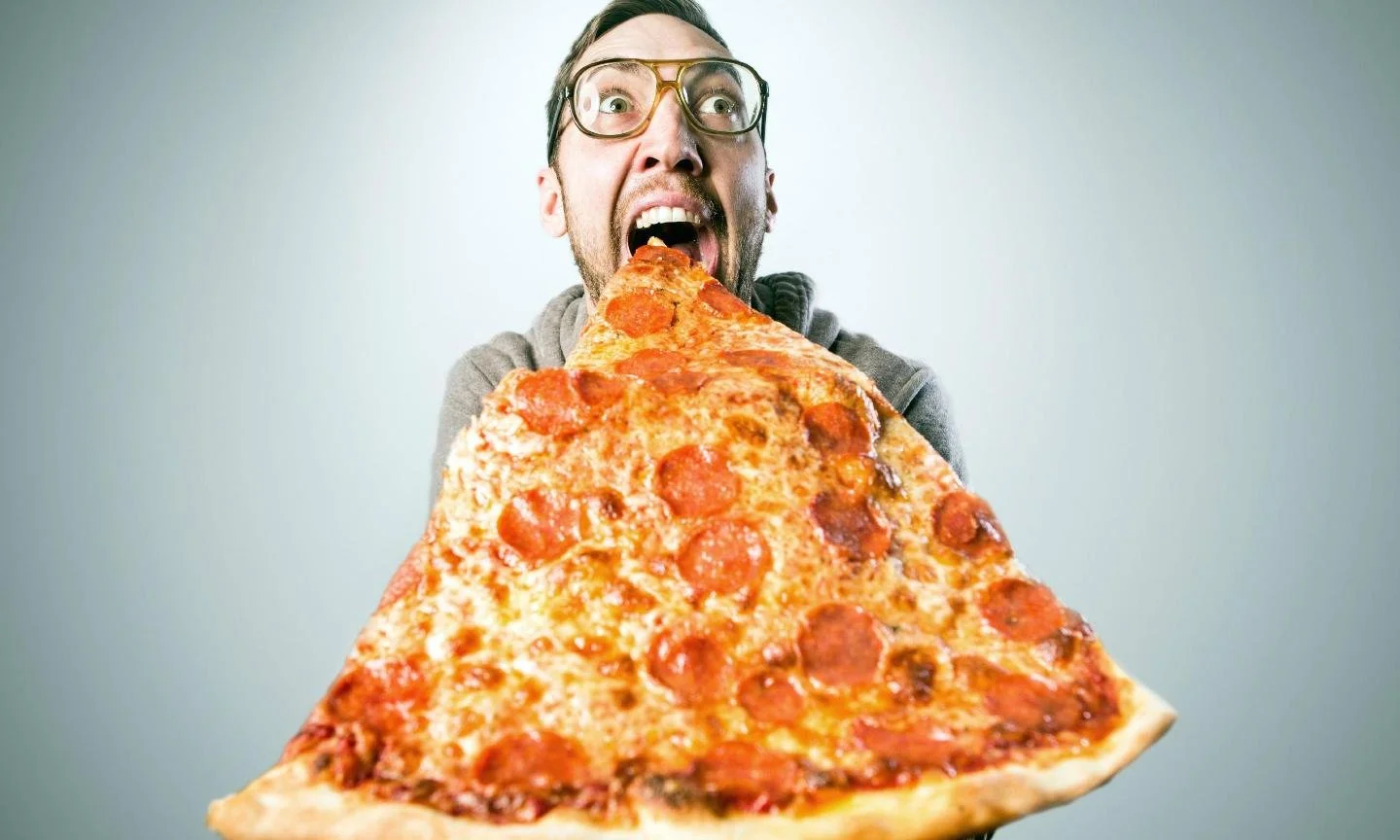Ultra-Processed and Hyper-Palatable
It will come as no surprise that consumption of ultra-processed foods has been linked with weight gain, obesity, metabolic syndrome, diabetes, heart disease, and all-cause mortality.
What is lesser known is that consumption of ultra-processed foods
is also strongly associated with depression,
anxiety, cognitive decline, dementia, neurodegenerative disease,
and the demyelination seen in multiple sclerosis.
Regular consumption of ultra-procesed foods
has a pronounced and lasting negative impact on our brains.
So why can’t we stop eating junk?
In large part, it’s because food manufacturers don’t want us to.
Here are some fun facts about our current food system:
Ultra-processed foods are intentionally engineered to be hyper-palatable to elicit the maximum pleasure and dopamine response when eaten.
Over the past 30 years, increasing at the same time as our rising rates of obesity, there has been a 20% increase in the hyper-palatability of our foods.
Even products that have been available for many years are being reworked or reformulated to increase their hyper-palatability.
70% of the available food supply in America is comprised of ultra-processed, hyper-palatable foods.
Ultra-processed, hyper-palatable foods intentionally induce cravings
to encourage ongoing product purchasing.
Given this, it is no surprise that giving up these items
poses a significant challenge for many people.
It’s not your fault if you feel addicted to ultra-processed foods.
It doesn’t mean anything is wrong with you.
It doesn’t mean that you are weak or have no willpower.
We are drawn to ultra-processed, hyper-palatable foods because
food manufacturers are very, very good at their jobs.
How do we fight back?
Recognize that we are being manipulated by food companies. As profits not health are the goal of large food manufacturers, we are being actively encouraged to buy their products through targeted advertising and the increased hyper-palatability of ultra-processed items.
Limit purchasing of foodstuffs from the middle aisles of the grocery store. The middle aisles are where most of the ultra-processed foods are housed. Except for specific minimally processed packaged items, like natural peanut butter or unsweetened cocoa powder, try to stick to the outer edges of the store.
Read labels. If a product has an ingredient that you don’t recognize, can’t pronounce, or wouldn’t cook with in your own kitchen, don’t buy it.
Start to view ultra-processed foods for what they are - NOT REAL FOOD. This was the biggest game changer for me. I now look at ultra-processed foods and actively say to myself, “I don’t want that. It’s not real food.”
Take a good hard look at your own diet. Count the number of ultra-processed foods you eat each day. How much of your diet is composed of not real food?
Actively decide if it is worth it. What are the likely health outcomes for your body and brain if you continue to eat ultra-processed foods longterm? How will eating these items impact your health and the health of your children?
Ultra-processed foods = NOT REAL FOOD.
Opt for real whole foods, mostly plants, as minimally processed as possible.
It’s as simple as that.
Wishing you excellent health and happy eating!
🌱
References:
https://doi.org/10.1017/S1368980022001227
www.pubmed.ncbi.nlm.nih.gov/32630022/
www.ncbi.nlm.nih.gov/pmc/articles/PMC9268228/#B16-nutrients-14-02568
www.pubmed.ncbi.nlm.nih.gov/33167080/
www.jamanetwork.com/journals/jamaneurology/article-abstract/2799140
www.n.neurology.org/content/99/10/e1056
www.ncbi.nlm.nih.gov/pmc/articles/PMC10169648/
www.cambridge.org/core/journals/public-health-nutrition/article/ultraprocessed-foods-what-they-are-and-how-to-identify-them/E6D744D714B1FF09D5BCA3E74D53A185
www.frontiersin.org/articles/10.3389/fnut.2022.821657/full#F1
www.sciencedirect.com/science/article/abs/pii/S0165032723001386





